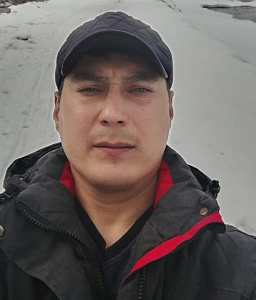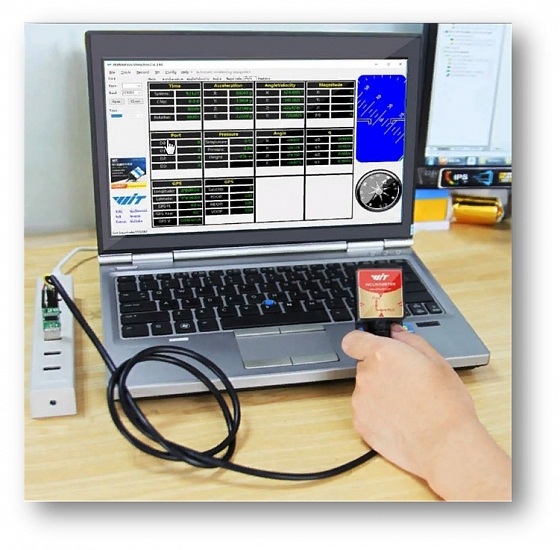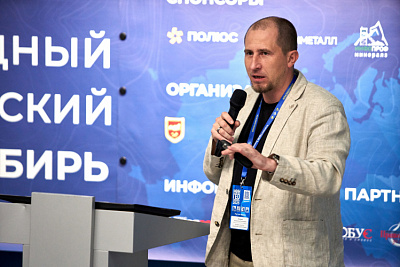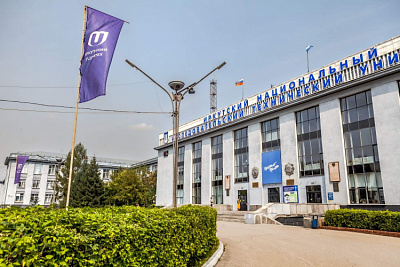INRTU Created Sensors for Measuring Railroad Bed Deformations Commissioned by Russian Railways
INRTU engineers designed and successfully tested sensors for measuring deformations on the railroad bed at the Baikal-Amur Mainline. The project makes it possible to reduce the risk of accidents and was commissioned by the East Siberian Railway. At the moment, mass delivery of instruments and software are being discussed.
In 2019, INRTU and East Siberian Railway (a branch of Russian Railways) signed a cooperation agreement, which implies the development of industry infrastructure, energy efficient and digital technologies, ecology and production. In the interests of Russian Railways, the university's Technopark conducted an accelerator program, and INRTU also participated in an innovation development competition.
One of the projects was a system based on sensors to monitor changes in the land bed on the railroad. The authors of the development are Alexandr and Dmitry Chenskiy, employees of the Department of Radioelectronics and Telecommunication Systems.
As Dmitry Chensky noted, the Department's team has extensive experience in robotics. Together with his colleagues, he has created navigation systems, drones, and catamarans for underwater research, geological exploration, and search and rescue operations. Based on these technologies, INRTU engineers produced a system that provides continuous monitoring of the position of the railroad bed.

“Railroad bed deformations are prone to disasters. Usually road workers monitor potentially dangerous areas on the railroad bed with geodetic devices, i.e. manually.
Our development fully automates the process. The device measures its position in the ground, records any changes and deformations of the rairoadl bed. Every five minutes, the data is received via cellular communication to the specialists responsible for safety on the railroad,” Dmitry shared.
Field tests of the sensors were conducted in 2022-2023. The measurements were checked against the data obtained with theodolites. The experiments were successful. Now the contract with Russian Railways for mass delivery of sensors is being discussed.
“We are planning to make a server for the customer where they can upload all the necessary data and receive a report on the condition of the backfill. There are similar devices on the domestic market, but not as convenient as ours. Another advantage is our favorable geographical location. We can quickly go to the site to install the system,” added Dmitry Chensky.
The customer was the Severobaikalskaya Engineering and Geological Base, which supervises the construction of the railroad bed and repairs on the tracks. According to Evgeny Vorotnikov, head of the base, the sensors are necessary, especially on the Baikal-Amur Mainline, where permafrost is widespread.

“I analyzed the data fr om the Hydrometcenter for the last 10 years and concluded that the air temperature increases by about 1 °C annually. This is associated with an increase in the number of areas with sedimentary phenomena on the railroad bed. The research led me to the idea that such sensors are highly necessary. Then we started cooperating with INRTU. In total, there are 706 places with deformations on the East Siberian Railway, of which 246 sections can be equipped with devices.
I hope that we will continue working with Alexandr and Dmitry Chensky. We have already discussed the issue of modifying the sensors for use in mudflow-prone areas,” noted Evgeny Vorotnikov.
This isn't the first INRTU project in the interests of railways. In 2021, based on the results of the Startup Express hackathon, students designed an app to regulate passenger transportation. Then Alexey Esaulov, a graduate student, developed a mathematical model to study the quality of electricity at one of the sections of the East Siberian Railway. The university team also used GIS technologies to survey areas along the Circum-Baikal Railway wh ere landslides and rockfalls are possible.








